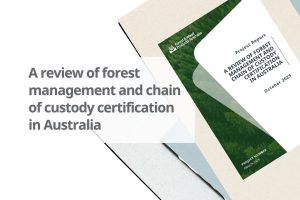A Sitka Spruce nicknamed ‘the loneliest tree in the world’ due to its location 200km away from its nearest neighbouring tree has found itself the unlikely bearer of evidence that the planet very recently entered a new geological age.
The spruce found on Campbell Island, a World Heritage site in the middle of the Southern Ocean, piqued the interest of scientists due to a ‘golden spike’ detected in its heartwood.
The radioactive carbon spike was the result of atmospheric thermonuclear bomb tests conducted during the 1950s and 1960s, and was fixed into the wood through photosynthesis.
Researchers have long been on the lookout for a ‘global’ signal to indicate a point at which human influence fundamentally altered the natural world, which is a necessary factor in officially declaring a new geological epoch.
In the northern hemisphere, an atmospheric radiocarbon peak was already known to have occurred in 1964, as revealed by signals preserved in European trees. And now, thanks to this one lonely spruce, we know that same peak occurred in late 1965 in the southern hemisphere, securing the signal the global status it required.
This new geological age in which we are now living has been named the Anthropocene.
The discovery was made by members of an Australasian Antarctic expedition from 2013 to 2014 and recently published research in Scientific Reports.
“We were incredibly excited to find this signal in the Southern Hemisphere on a remote island, because for the first time it gave us a well-defined global signature for a new geological epoch that could be preserved in the geological record,” said researcher and lead author Professor Chris Turney of the University of New South Wales.
“Thousands of years from now this golden spike should still stand as a detectable marker for the transformation of the Earth by humankind,” he said.
The 100-year-old tree itself is an anomaly in the Southern Ocean. It is naturally found along the North American Pacific Coast but it is credited with being planted on Campbell Island by the Governor of New Zealand in 1901.
The oceanic climate has had an unusual effect on the spruce. Although it has grown to 10m tall, the tree has never produced cones, suggesting it has remained in a permanently juvenile state.
“It seems somehow apt that this extraordinary tree, planted far from its normal habitat by humans has also become a marker for the changes we have made to the planet,” said co-author Professor Mark Maslin of UCL.
“It is yet further evidence, if that was needed, that in this new epoch no part of our planet remains untouched by humans,” added Professor Maslin.
Photo credit: Pavla Fenwick



